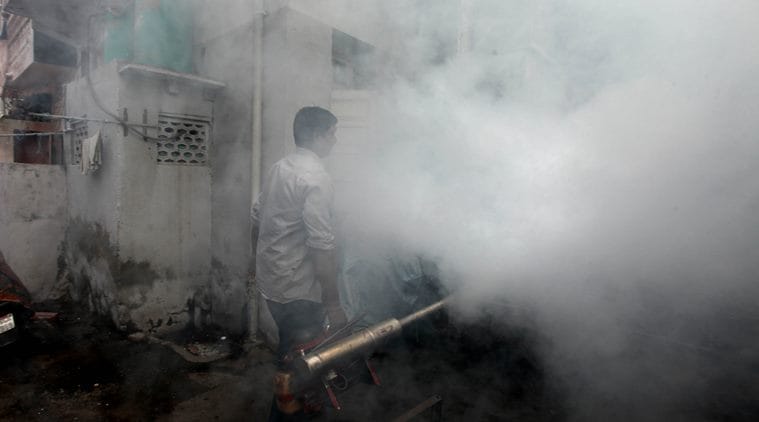Malaria likely to be notifiable disease, says Joint Director of Health Kanchan Jagtap
Thirty-one districts have an annual parasite incidence of less than one case per 1000 population.
 This year, 6,824 cases have been reported, though there have been no casualties
This year, 6,824 cases have been reported, though there have been no casualties
Malaria is likely to be a notifiable disease, said Joint Director of Health Kanchan Jagtap, while speaking on the special action plan launched to tackle the vector-borne disease. June is observed as anti-malaria month, and this year, 6,824 cases have been reported, though there have been no casualties.
Thirty-one districts have an annual parasite incidence of less than one case per 1000 population. “Sixty per cent of the cases of malaria across the state are in Gadchiroli. Hence our focus is on Gadchiroli which has an annual parasite incidence of 10 cases of malaria per 1000 population, every year,” Jagtap told mediapersons on Wednesday.
A headstart has been made by taking special preventive measures like ensuring that affected persons in villages of Gadchiroli take medicines on the lines of Directly Observed Treatment (DOT) for TB patients. Assistant Director of Health BS Kamble also pointed out that categorisation of villages in Gadchiroli, according to the level of severity of malaria, has helped officials in treating the disease. Hence from 6,110 cases of malaria in Gadchiroli, last year, the number till April this year has dipped to 3,666.
[related-post]
In June, epidemiologically, malaria cases are reported from all places and hence the directorate of public health has instructed district health officials to be alert. The month-long campaign would have daily activities to prevent and control the vector, Jagtap said.
“Our preventive measures have helped as the number of malaria cases were 56,603 with 59 deaths in 2015. Last year, between January and April, there were 10,400 cases of malaria across the state, and this year, during the same period, there have been 6,800 cases,” Jagtap said. The high-risk districts, apart from Gadchiroli, are Gondia (281 cases), Chandrapur (283), Raigad (286), Thane (103) and Mumbai (1,205).
Jagtap further said that the number of Plasmodium Falciparum, cases of malaria that have a severe strain, have increased. In 2014, there were 25,770 cases of PF malaria, and in 2015, there were 31,139 cases. This year, till now, there have been 2,839 cases. “This is because patients are not adhering to treatment and hence we have also submitted a proposal to make malaria a notifiable disease,” Jagtap said.
59,000 applications for 1,100 posts of health workers
Jagtap said that there were as many as 59,000 applications for the 1,100 posts of multi-purpose health workers. Out of the 1,200 posts of laboratory technicians, 400 are vacant. Out of eight posts of entomologists, six are vacant. Jagtap said that these are being filled and plans are also under way to revise recruitment rules. Some of the rules were framed several years ago and the eligibility criteria for such appointments needs to be revised, she said.
Aim to eliminate malaria by 2025
The 16 districts of Pune, Ahmednagar, Nashik, Jalgaon, Solapur, Sangli, Aurangabad, Jalna, Parbhani, Hingoli, Latur, Osmanabad, Beed, Nanded, Washim and Buldhana have an annual parasite incidence (API) of less than 0.1 cases per 1,000 population. Another 15 districts have an API of less than 1. The Centre, at a recent meeting, chalked out a target that states have to achieve towards eliminating malaria. “Our target now is to eliminate malaria by 2025,” says Jagtap.







